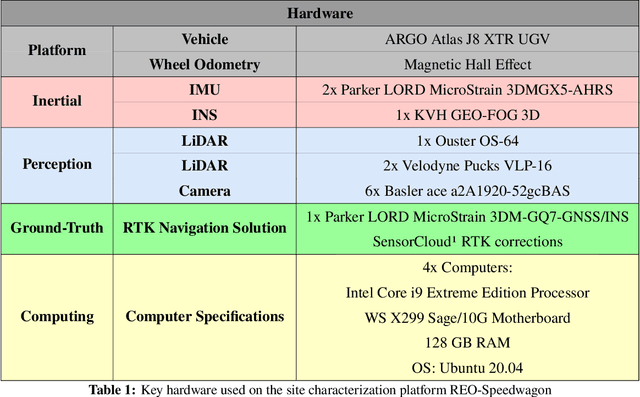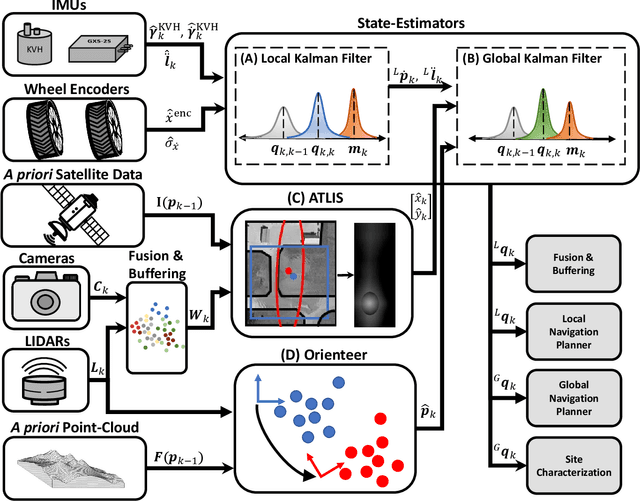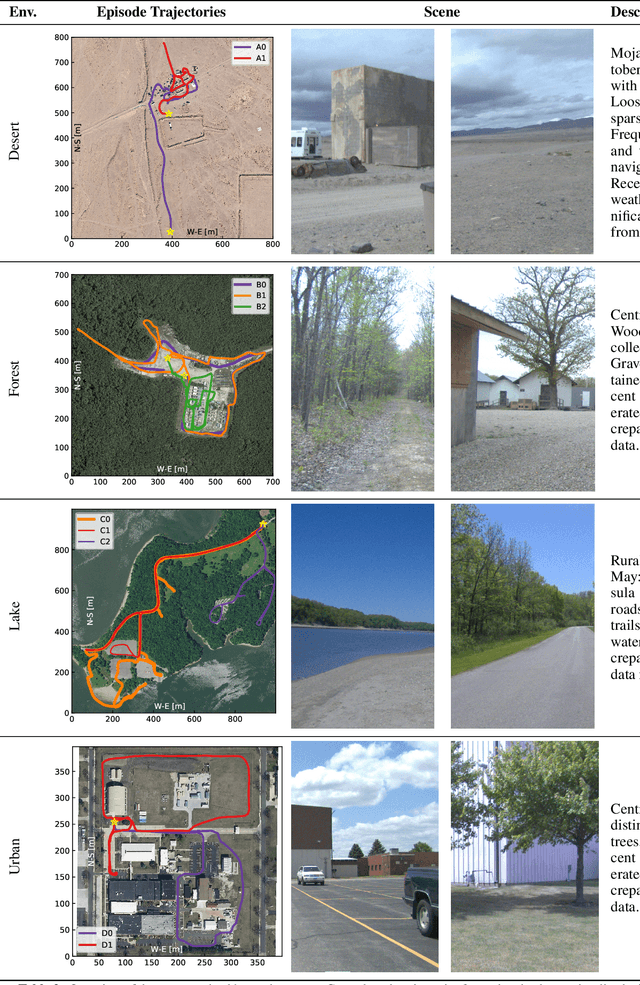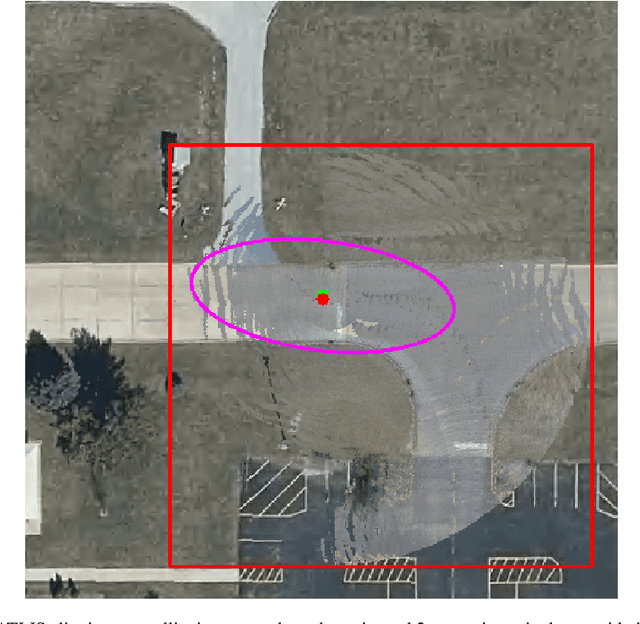W. Jacob Wagner
In-Situ Soil-Property Estimation and Bayesian Mapping with a Simulated Compact Track Loader
Jul 30, 2025Abstract:Existing earthmoving autonomy is largely confined to highly controlled and well-characterized environments due to the complexity of vehicle-terrain interaction dynamics and the partial observability of the terrain resulting from unknown and spatially varying soil conditions. In this chapter, a a soil-property mapping system is proposed to extend the environmental state, in order to overcome these restrictions and facilitate development of more robust autonomous earthmoving. A GPU accelerated elevation mapping system is extended to incorporate a blind mapping component which traces the movement of the blade through the terrain to displace and erode intersected soil, enabling separately tracking undisturbed and disturbed soil. Each interaction is approximated as a flat blade moving through a locally homogeneous soil, enabling modeling of cutting forces using the fundamental equation of earthmoving (FEE). Building upon our prior work on in situ soil-property estimation, a method is devised to extract approximate geometric parameters of the model given the uneven terrain, and an improved physics infused neural network (PINN) model is developed to predict soil properties and uncertainties of these estimates. A simulation of a compact track loader (CTL) with a blade attachment is used to collect data to train the PINN model. Post-training, the model is leveraged online by the mapping system to track soil property estimates spatially as separate layers in the map, with updates being performed in a Bayesian manner. Initial experiments show that the system accurately highlights regions requiring higher relative interaction forces, indicating the promise of this approach in enabling soil-aware planning for autonomous terrain shaping.
Deriving The Fundamental Equation of Earthmoving and Configuring Vortex Studio Earthmoving Simulation for Soil Property Estimation Experimentation
May 25, 2025Abstract:This document serves as supplementary material for two International Society for Terrain-Vehicle Systems conference publications regarding in situ soil property estimation by Wagner et al. in 2023 and 2025. It covers the derivation of the fundamental equation of earthmoving for a flat blade moving through sloped soil and provides some information regarding the advanced configuration of Vortex Studio's soil-tool interaction simulation.
In Situ Soil Property Estimation for Autonomous Earthmoving Using Physics-Infused Neural Networks
Sep 05, 2023



Abstract:A novel, learning-based method for in situ estimation of soil properties using a physics-infused neural network (PINN) is presented. The network is trained to produce estimates of soil cohesion, angle of internal friction, soil-tool friction, soil failure angle, and residual depth of cut which are then passed through an earthmoving model based on the fundamental equation of earthmoving (FEE) to produce an estimated force. The network ingests a short history of kinematic observations along with past control commands and predicts interaction forces accurately with average error of less than 2kN, 13% of the measured force. To validate the approach, an earthmoving simulation of a bladed vehicle is developed using Vortex Studio, enabling comparison of the estimated parameters to pseudo-ground-truth values which is challenging in real-world experiments. The proposed approach is shown to enable accurate estimation of interaction forces and produces meaningful parameter estimates even when the model and the environmental physics deviate substantially.
A Robust Localization Solution for an Uncrewed Ground Vehicle in Unstructured Outdoor GNSS-Denied Environments
Sep 05, 2023



Abstract:This work addresses the challenge of developing a localization system for an uncrewed ground vehicle (UGV) operating autonomously in unstructured outdoor Global Navigation Satellite System (GNSS)-denied environments. The goal is to enable accurate mapping and long-range navigation with practical applications in domains such as autonomous construction, military engineering missions, and exploration of non-Earth planets. The proposed system - Terrain-Referenced Assured Engineer Localization System (TRAELS) - integrates pose estimates produced by two complementary terrain referenced navigation (TRN) methods with wheel odometry and inertial measurement unit (IMU) measurements using an Extended Kalman Filter (EKF). Unlike simultaneous localization and mapping (SLAM) systems that require loop closures, the described approach maintains accuracy over long distances and one-way missions without the need to revisit previous positions. Evaluation of TRAELS is performed across a range of environments. In regions where a combination of distinctive geometric and ground surface features are present, the developed TRN methods are leveraged by TRAELS to consistently achieve an absolute trajectory error of less than 3.0 m. The approach is also shown to be capable of recovering from large accumulated drift when traversing feature-sparse areas, which is essential in ensuring robust performance of the system across a wide variety of challenging GNSS-denied environments. Overall, the effectiveness of the system in providing precise localization and mapping capabilities in challenging GNSS-denied environments is demonstrated and an analysis is performed leading to insights for improving TRN approaches for UGVs.
 Add to Chrome
Add to Chrome Add to Firefox
Add to Firefox Add to Edge
Add to Edge